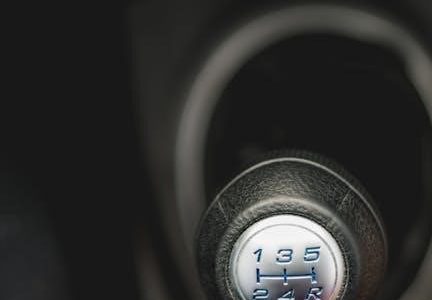The 2007 Chrysler Sebring is a stylish sedan offering a blend of comfort, performance, and modern design․ Its manual provides essential guidance for optimal vehicle operation and maintenance, ensuring safety and reliability․ Key features include a spacious interior, advanced safety systems, and efficient engine options․ The Vehicle Identification Number (VIN) is located on the driver’s side dashboard, visible through the windshield, and is crucial for identification and servicing purposes․
1․1 Overview of the 2007 Chrysler Sebring
The 2007 Chrysler Sebring is a mid-size sedan known for its sleek design and comfortable ride․ It offers a range of engine options, including a 2․4L 4-cylinder and a 3․5L V6, providing both efficiency and power․ The vehicle features a spacious interior with amenities like command-of-the-road seating, ensuring a pleasant experience for all passengers․ The manual for the 2007 Chrysler Sebring is readily available online, offering detailed guidance for proper vehicle operation, maintenance, and troubleshooting․ With a focus on safety and performance, the Sebring is a reliable choice for drivers seeking a balance of style and functionality․
1․2 Importance of the Owner’s Manual
The owner’s manual for the 2007 Chrysler Sebring is a crucial resource for drivers, providing detailed information on vehicle operation, maintenance, and troubleshooting․ It ensures safe and enjoyable driving by outlining proper usage of features, recommended maintenance schedules, and diagnostic procedures․ The manual also includes essential details about the Vehicle Identification Number (VIN), located on the driver’s side dashboard․ By following the guidelines in the manual, owners can optimize performance, prevent issues, and extend the lifespan of their vehicle․ Accessible online, the manual has been well-received by users, offering clear and comprehensive guidance for all aspects of Sebring ownership․
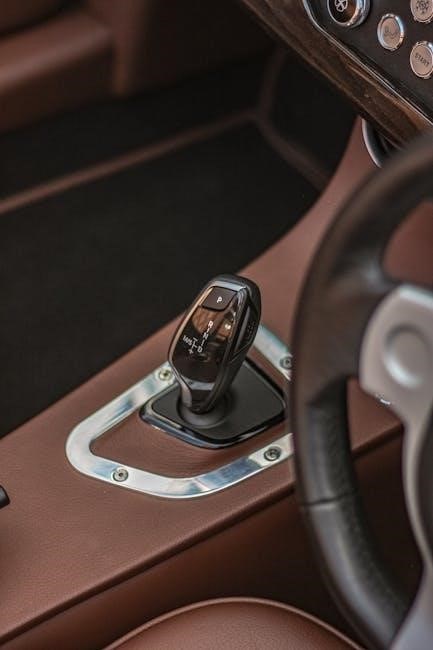
Key Features of the 2007 Chrysler Sebring
The 2007 Chrysler Sebring boasts a sleek design, comfortable seating, and advanced features․ Its engine options, transmission choices, and fuel efficiency make it a reliable choice․ The manual highlights these features, ensuring optimal performance and driver satisfaction․
2․1 Engine Specifications
The 2007 Chrysler Sebring offers a range of engine options, including a 2․4L 4-cylinder engine and a 3․5L V6 engine․ The 2․4L engine provides excellent fuel efficiency, making it ideal for daily commuting, while the 3․5L V6 delivers higher horsepower and torque for smoother acceleration and towing capability․ Both engines are paired with automatic transmissions, ensuring a seamless driving experience․ The manual provides detailed specifications, including horsepower, torque, and recommended maintenance to optimize engine performance and longevity․ Proper care of the engine, as outlined in the manual, ensures reliability and durability over time․
2․2 Transmission Options
The 2007 Chrysler Sebring features a range of transmission options designed for smooth and efficient driving․ The standard 4-speed automatic transmission is paired with the 2․4L engine, offering seamless gear shifts and optimal fuel efficiency․ For enhanced performance, a 6-speed automatic transmission is available with the 3․5L V6 engine, providing improved acceleration and responsiveness․ Additionally, some models offer a manual transmission option, allowing drivers to enjoy a more engaging driving experience․ The manual provides detailed information on transmission operation, maintenance, and troubleshooting to ensure optimal performance and longevity of the drivetrain system․
2․3 Fuel Efficiency
The 2007 Chrysler Sebring offers varying fuel efficiency depending on the engine and drivetrain configuration․ The 2․4L 4-cylinder engine achieves an estimated 20-25 mpg in the city and 28-30 mpg on the highway․ The 3․5L V6 engine provides slightly lower efficiency at 18-20 mpg city and 26-28 mpg highway․ Regular maintenance, proper tire pressure, and smooth driving habits can help maximize these ratings․ The manual provides detailed guidelines for optimizing fuel economy, ensuring drivers can enjoy efficient performance while minimizing fuel costs․

Understanding the Instrument Panel
The instrument panel in the 2007 Chrysler Sebring features a sleek design with essential controls and indicators․ It includes gauges for speed, RPM, fuel level, and temperature, ensuring drivers stay informed․ The panel also houses buttons for climate control, audio settings, and cruise control, providing easy access to key functions․ Proper familiarity with the instrument panel enhances driving convenience and safety, allowing drivers to monitor vehicle performance and adjust settings efficiently․
3․1 Dashboard Layout
The 2007 Chrysler Sebring’s dashboard is designed for driver convenience, with controls and instruments arranged intuitively․ The central dashboard features climate and audio controls, while the driver-side cluster includes the speedometer, tachometer, fuel gauge, and temperature gauge․ The layout prioritizes easy access to essential functions, such as the steering wheel-mounted cruise control and auxiliary inputs for entertainment․ The dashboard materials are durable and visually appealing, contributing to a refined interior environment․ This logical arrangement ensures drivers can focus on the road while maintaining control over vehicle settings, enhancing both comfort and safety during operation․
3․2 Gauge and Indicator Lights
The 2007 Chrysler Sebring features a comprehensive set of gauges and indicator lights designed to monitor vehicle performance and safety․ The speedometer, tachometer, fuel gauge, and temperature gauge provide real-time data, while warning lights alert drivers to issues like low oil pressure, battery problems, or engagement of safety systems like ABS․ The indicator lights for seat belts, airbags, and park brake ensure compliance with safety protocols․ These components work together to keep drivers informed, promoting safe and efficient driving․ Regular monitoring of these indicators helps prevent potential issues and ensures optimal vehicle operation and longevity․
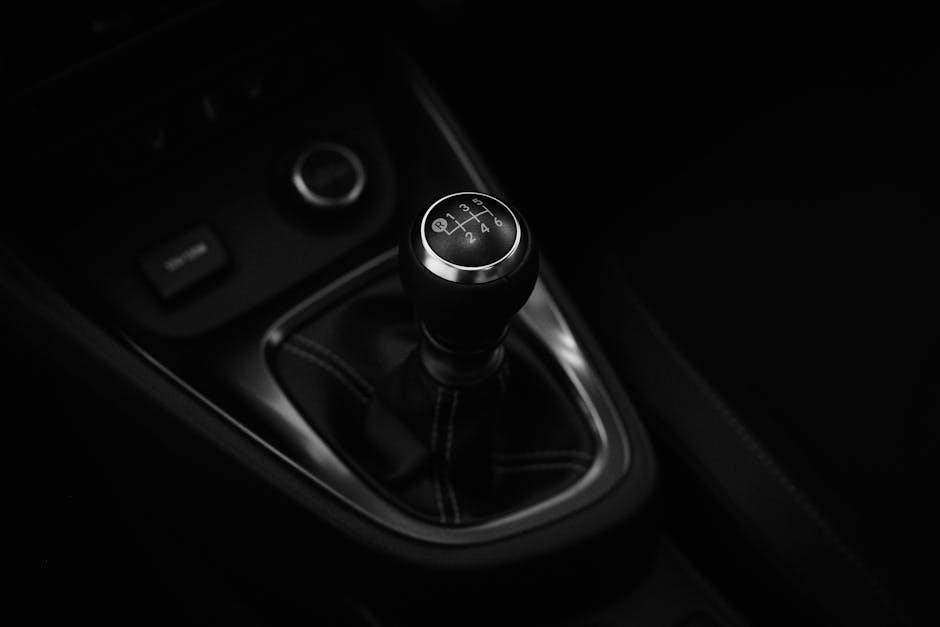
Maintenance Schedule
Regular maintenance ensures optimal performance and longevity․ Schedule oil changes every 3,000–5,000 miles, tire rotations every 6,000 miles, and inspect belts, fluids, and filters annually․
4․1 Recommended Maintenance Intervals
The 2007 Chrysler Sebring requires regular maintenance to ensure reliability․ Oil changes are recommended every 3,000–5,000 miles․ Tire rotations should occur every 6,000 miles․ Spark plugs should be replaced every 30,000 miles, while the serpentine belt is typically due at 50,000–90,000 miles․ Coolant replacement is needed every 50,000–100,000 miles․ Brake pads should be inspected every 10,000–15,000 miles․ The timing belt, if equipped, is usually replaced at 100,000 miles․ Always consult the owner’s manual for specific intervals tailored to your driving conditions․
4․2 Oil Change Procedures
To perform an oil change on your 2007 Chrysler Sebring, start by gathering the correct materials: a socket wrench, oil filter wrench, new oil filter, and enough 5W-20 or 5W-30 oil for your vehicle․ Warm up the engine, then locate the oil drain plug underneath the car; Drain the oil into a pan and replace the filter․ Refill the engine with the recommended oil type and amount․ Tighten the oil drain plug and filter securely․ Check for leaks, then dispose of the used oil responsibly․ Always refer to your owner’s manual for specific oil capacity and recommendations․
4․3 Tire Rotation and Pressure
Regular tire rotation and proper inflation are essential for optimal performance and safety in your 2007 Chrysler Sebring․ Rotate tires every 8,000 to 12,000 miles, following the recommended pattern in your owner’s manual․ Check tire pressure monthly, using the pressure specified on the tire information placard on the driver’s doorjamb․ Under-inflated tires can reduce fuel efficiency and increase wear․ Always inspect tires for uneven wear or damage․ Proper tire maintenance ensures even tread wear, improves handling, and enhances overall vehicle safety․ Refer to your manual for specific guidelines and recommendations tailored to your vehicle․

Diagnosing Common Issues
Identify and address common problems promptly to ensure optimal vehicle performance․ Use diagnostic tools and the owner’s manual to troubleshoot issues effectively․
5․1 Troubleshooting Common Problems
Troubleshooting common issues in the 2007 Chrysler Sebring involves identifying symptoms and addressing root causes․ Start by checking the dashboard warning lights, as they often indicate specific problems․ For example, the “Check Engine” light may signal issues with the emissions system or engine performance․ Common problems include faulty oxygen sensors, loose gas caps, or malfunctioning alternators․ Refer to the owner’s manual for guidance on interpreting codes and performing basic checks․ Regularly inspecting fluids, belts, and hoses can help prevent issues․ If problems persist, consult a certified mechanic to avoid further damage to the vehicle․
5․2 Understanding Warning Lights
The 2007 Chrysler Sebring features a range of dashboard warning lights designed to alert drivers to specific vehicle conditions․ The “Check Engine” light indicates engine or emissions issues, while the temperature light signals overheating․ The battery light warns of electrical system problems, and the oil light alerts to low oil pressure․ If a light illuminates, stop safely and consult the manual for its meaning․ Some lights, like the ABS or traction control indicators, may require professional diagnosis․ Ignoring warning lights can lead to costly repairs, so address them promptly to ensure vehicle safety and performance․
5․3 Interpreting Error Codes
The 2007 Chrysler Sebring uses error codes to identify specific issues within the vehicle’s systems․ When the “Check Engine” light illuminates, an error code is stored in the onboard computer․ Codes like P0171 or P0300 indicate issues such as system malfunctions or misfires․ Use an OBD-II scanner to retrieve these codes, which start with a letter (e․g․, “P” for powertrain)․ Refer to the owner’s manual or a repair manual for code meanings․ Ignoring error codes can lead to further damage․ Always address codes promptly and consult a professional for complex repairs to ensure proper vehicle function and safety․
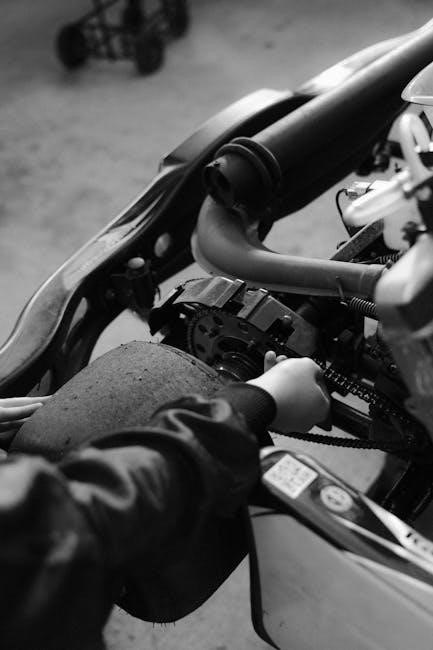
Safety Features
The 2007 Chrysler Sebring includes advanced safety features like multiple airbags, anti-lock brakes, and electronic stability control to enhance driver and passenger protection in various driving conditions․
6․1 Airbag System
The 2007 Chrysler Sebring is equipped with a comprehensive airbag system designed to provide optimal protection in the event of a collision․ Dual front airbags are standard, while side and curtain airbags are available as optional features․ These airbags deploy based on the severity of the impact to minimize injury risk․ The system is integrated with sensors that detect collision force and trigger deployment accordingly․ Always ensure proper seating and seatbelt use to maximize airbag effectiveness․ The airbag warning light on the dashboard alerts drivers to any system issues․ Consult the manual or a certified technician for diagnostics or repairs if the light illuminates․
6․2 Seat Belt and Child Restraint Systems
The 2007 Chrysler Sebring is equipped with a three-point seat belt system for all passengers, designed to provide optimal protection in various collision scenarios․ The front seats feature pretensioners that tighten the belts during sudden stops or crashes․ For child safety, the vehicle supports the LATCH (Lower Anchors and Tethers for Children) system, making it easier to install child seats securely․ Rear-facing and forward-facing child restraints can be used, with booster seats recommended for older children․ Always follow the manufacturer’s guidelines for proper installation and usage․ Ensure all passengers, including children, are correctly restrained for maximum safety․
6․3 Anti-Lock Braking System (ABS)
The 2007 Chrysler Sebring features an Anti-Lock Braking System (ABS) designed to enhance braking performance and vehicle control during emergency stops․ ABS prevents wheel lock-up by rapidly pulsing the brakes, allowing the driver to maintain steering control․ This system is especially beneficial on slippery or uneven surfaces․ When ABS activates, drivers may feel a pulsating sensation in the brake pedal or hear a noise, but this is normal․ For optimal performance, press the brake pedal firmly and avoid pumping it manually․ ABS contributes to shorter stopping distances and improved stability, making it a critical safety feature for safe driving․ Always ensure the system is functioning properly through regular maintenance checks․

Electrical System
The 2007 Chrysler Sebring’s electrical system powers essential components like lights, wipers, and accessories․ It includes the battery, alternator, wiring, and fuses․ Proper maintenance ensures reliability․
7․1 Battery Maintenance
Regular battery maintenance is crucial for the 2007 Chrysler Sebring․ Check terminals for corrosion and clean them with a wire brush if necessary․ Ensure the battery is securely fastened to prevent movement․ Avoid deep discharges by keeping the vehicle parked in a cool, dry place․ Test the battery voltage periodically and charge it if it falls below 12․4V․ Inspect the battery case for leaks or cracks and replace it immediately if damaged․ Refer to the owner’s manual for recommended charging procedures and replacement guidelines․
7․2 Fuse Box Location and Diagram
The 2007 Chrysler Sebring has two fuse boxes: one under the hood and another inside the cabin․ The under-hood fuse box is located on the driver’s side, near the air filter housing․ The interior fuse box is found behind a panel on the driver’s side dashboard․ Refer to the owner’s manual for a detailed diagram labeling each fuse․ Use the diagram to identify fuses for specific systems, such as headlights or wipers․ To replace a fuse, turn off the ignition, locate the blown fuse using the diagram, and swap it with a new one of the same amperage rating․
7․3 Electronic Accessories
The 2007 Chrysler Sebring offers a range of electronic accessories to enhance convenience and entertainment․ These include a CD player with MP3 compatibility, auxiliary input for external devices, and a premium sound system․ Optional features like a touchscreen navigation system and Bluetooth connectivity provide modern functionality․ The vehicle also supports electronic controls for climate settings and seat adjustments․ For optimal performance, ensure all accessories are properly connected and configured․ Refer to the owner’s manual for specific instructions on using and maintaining these features effectively to enjoy a seamless driving experience․
Driver Assistance Systems
The 2007 Chrysler Sebring features advanced driver assistance systems designed to enhance safety and control․ These include traction control and stability control, which improve vehicle stability during challenging driving conditions․
8․1 Traction Control System
The Traction Control System (TCS) in the 2007 Chrysler Sebring enhances driving stability by automatically adjusting engine power and applying selective braking to wheels losing traction․ This feature is particularly useful during acceleration on slippery surfaces, helping maintain directional control․ The TCS works in conjunction with the Anti-Lock Braking System (ABS) to optimize stability and reduce wheel spin․ Drivers can deactivate the system if needed, though it is designed to improve safety and performance in various driving conditions․ Proper TCS function is essential for maximizing the vehicle’s handling capabilities․
8․2 Stability Control
The Stability Control System in the 2007 Chrysler Sebring enhances vehicle stability by adjusting engine power and selectively applying brakes to individual wheels․ This system is particularly effective in slippery road conditions or during sharp turns, helping the vehicle stay on its intended path․ It uses electronic sensors to monitor steering wheel angle, vehicle speed, and lateral acceleration․ If the system detects a loss of stability, it automatically makes adjustments to restore control․ The Stability Control System works in conjunction with ABS and TCS to optimize safety and performance․ Drivers can deactivate the system if needed, such as in deep snow conditions, to allow wheelspin for traction․ Proper function of this system is crucial for maintaining vehicle stability and safety on the road․
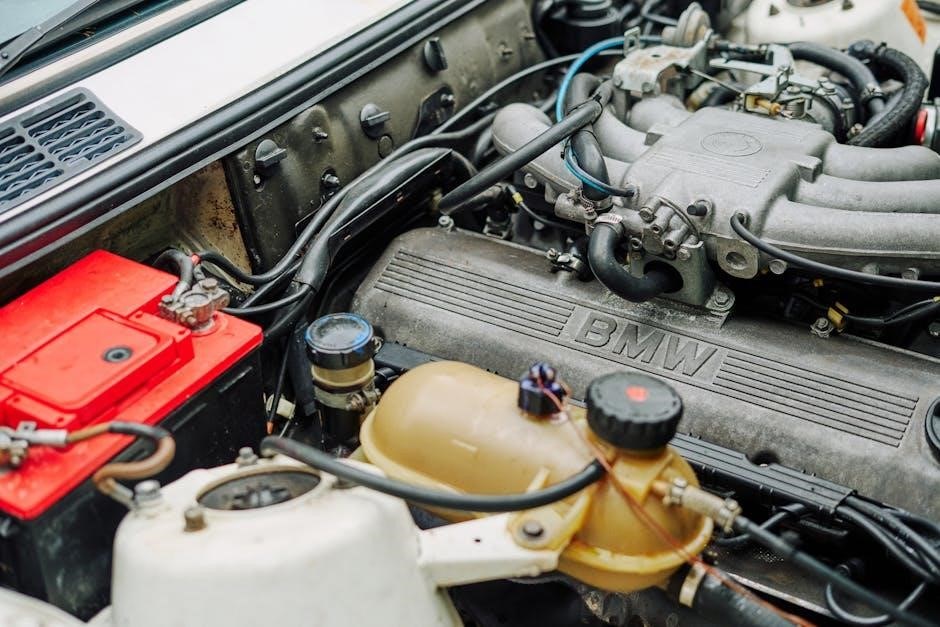
Fuel Efficiency Tips
- Maintain correct tire pressure to reduce fuel consumption․
- Remove extra weight to improve fuel efficiency․
- Accelerate smoothly and avoid hard braking․
- Drive at moderate speeds for better mileage․
- Use the correct fuel type for optimal performance․
9․1 Driving Habits for Better Fuel Economy
Adopting efficient driving habits can significantly improve fuel economy for your 2007 Chrysler Sebring․ Accelerate smoothly and avoid aggressive driving, as rapid acceleration and hard braking reduce fuel efficiency․ Maintain a steady speed, especially on highways, and use cruise control when possible․ Remove unnecessary weight from the trunk, as extra weight increases fuel consumption․ Avoid idling for extended periods, as it wastes fuel․ Check tire pressure regularly, as underinflated tires can lower mileage․ Additionally, avoid revving the engine unnecessarily and shift gears smoothly․ By practicing these habits, you can optimize fuel efficiency and save on gas costs․
9․2 Optimizing Vehicle Performance
Optimizing your 2007 Chrysler Sebring’s performance involves regular maintenance and smart driving practices․ Ensure routine oil changes and air filter replacements to keep the engine running efficiently․ Check tire pressure regularly, as proper inflation improves handling and fuel efficiency․ Avoid carrying unnecessary weight in the trunk, as it can strain the engine․ Keep the exhaust system clean and free of blockages to maintain power output․ Use the recommended fuel type for your vehicle․ Avoid extreme temperatures and aggressive driving, as they can reduce performance․ Finally, consult your owner’s manual for specific recommendations tailored to your Sebring’s needs․

Vehicle Identification Number (VIN)
The Vehicle Identification Number (VIN) is a unique 17-character code that identifies your 2007 Chrysler Sebring․ It provides essential information about the vehicle, including make, model, and production details․
10․1 Location of VIN
The Vehicle Identification Number (VIN) for the 2007 Chrysler Sebring can be found in two primary locations; First, it is located on the driver’s side dashboard, near the windshield․ This is the most accessible location for quick reference․ Second, the VIN is stamped on the driver’s side doorjamb, visible when the door is open․ Additionally, it may be printed on the engine block or the vehicle’s certification label; Knowing the VIN’s location is essential for vehicle identification, insurance purposes, or when servicing the car․ Always verify the VIN matches your vehicle’s registration documents․
10․2 Understanding VIN Information
The Vehicle Identification Number (VIN) is a unique 17-character code that identifies your 2007 Chrysler Sebring․ It contains essential information about the vehicle, such as the manufacturer, production year, engine type, and model․ The VIN is structured in sections: the first three characters identify the manufacturer and vehicle type, while the next characters provide details about the engine, transmission, and production plant․ The final characters are a serial number unique to your vehicle․ Understanding the VIN helps in verifying the car’s authenticity and history, making it a crucial reference for maintenance, repairs, and ownership documentation․

Storage and Transportation
Proper storage and transportation are crucial to maintain your 2007 Chrysler Sebring’s condition․ Follow guidelines to ensure safety and preserve the vehicle’s integrity during moving or extended storage․
11․1 Preparing the Vehicle for Storage
Before storing your 2007 Chrysler Sebring, clean the exterior and wax it to protect the paint․ Vacuum the interior thoroughly and ensure no food or moisture remains․ Fill the gas tank to prevent rust and add a fuel stabilizer․ Disconnect the negative battery terminal to avoid drain․ Block the wheels to prevent movement and place rods or bags under the tires to avoid flat spots․ Store in a dry, level location, away from direct sunlight․ Cover the car with a breathable material to protect from dust and moisture․ Avoid dehumidifiers inside the vehicle to maintain a stable environment․
11․2 Transportation Guidelines
When transporting your 2007 Chrysler Sebring, ensure it is properly secured to a trailer or tow truck using axle straps or wheel dollies; Avoid towing with a hook to prevent damage to the vehicle’s frame․ Check all fluid levels and ensure the parking brake is fully disengaged․ Remove loose items from the interior to prevent damage during transit․ If shipping, consider using a covered transport to protect the vehicle from weather and debris; Always follow local towing regulations and consider hiring a professional service for long-distance transport to ensure safety and avoid potential damage․
Regular maintenance and proper vehicle care ensure optimal performance and longevity of your 2007 Chrysler Sebring․ Follow the manual’s guidelines for a safe and enjoyable driving experience․
12․1 Final Tips for Vehicle Maintenance
Regular oil changes, tire rotations, and fluid checks are essential for maintaining your 2007 Chrysler Sebring․ Always refer to the owner’s manual for specific intervals and procedures․ Inspect belts and hoses regularly for signs of wear․ Keep the battery terminals clean and secure․ Check tire pressure monthly and before long trips․ Address warning lights promptly to prevent major repairs․ Maintain proper coolant and brake fluid levels․ Finally, follow a consistent maintenance schedule to ensure your vehicle runs efficiently and safely for years to come․
12․2 Importance of Regular Servicing
Regular servicing is crucial for maintaining the performance, reliability, and longevity of your 2007 Chrysler Sebring․ It helps identify and address potential issues before they escalate, reducing repair costs and preventing breakdowns․ Servicing ensures optimal fuel efficiency, smoother operation, and enhanced safety․ Adhering to the recommended schedule in the owner’s manual also preserves your vehicle’s warranty and resale value․ A well-maintained car performs better, lasts longer, and provides peace of mind on the road․

